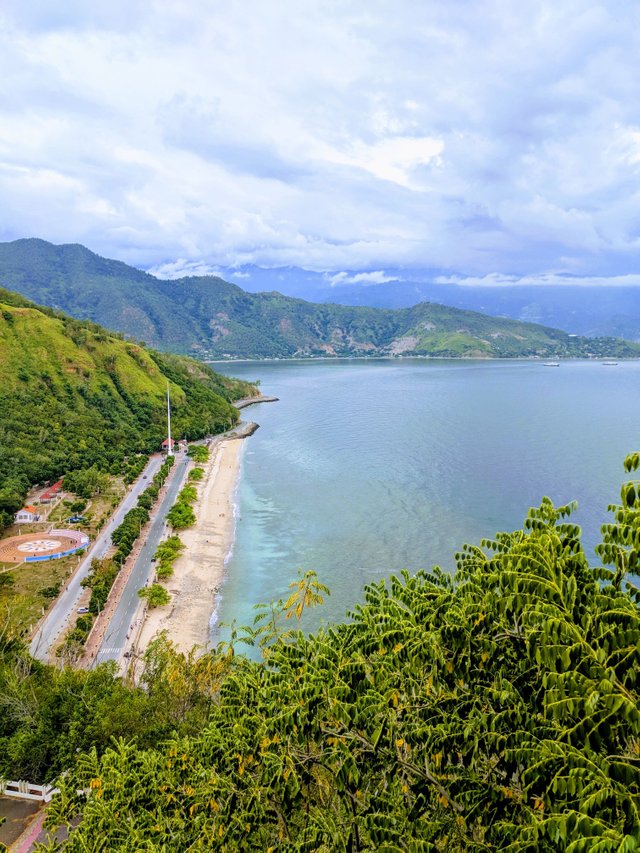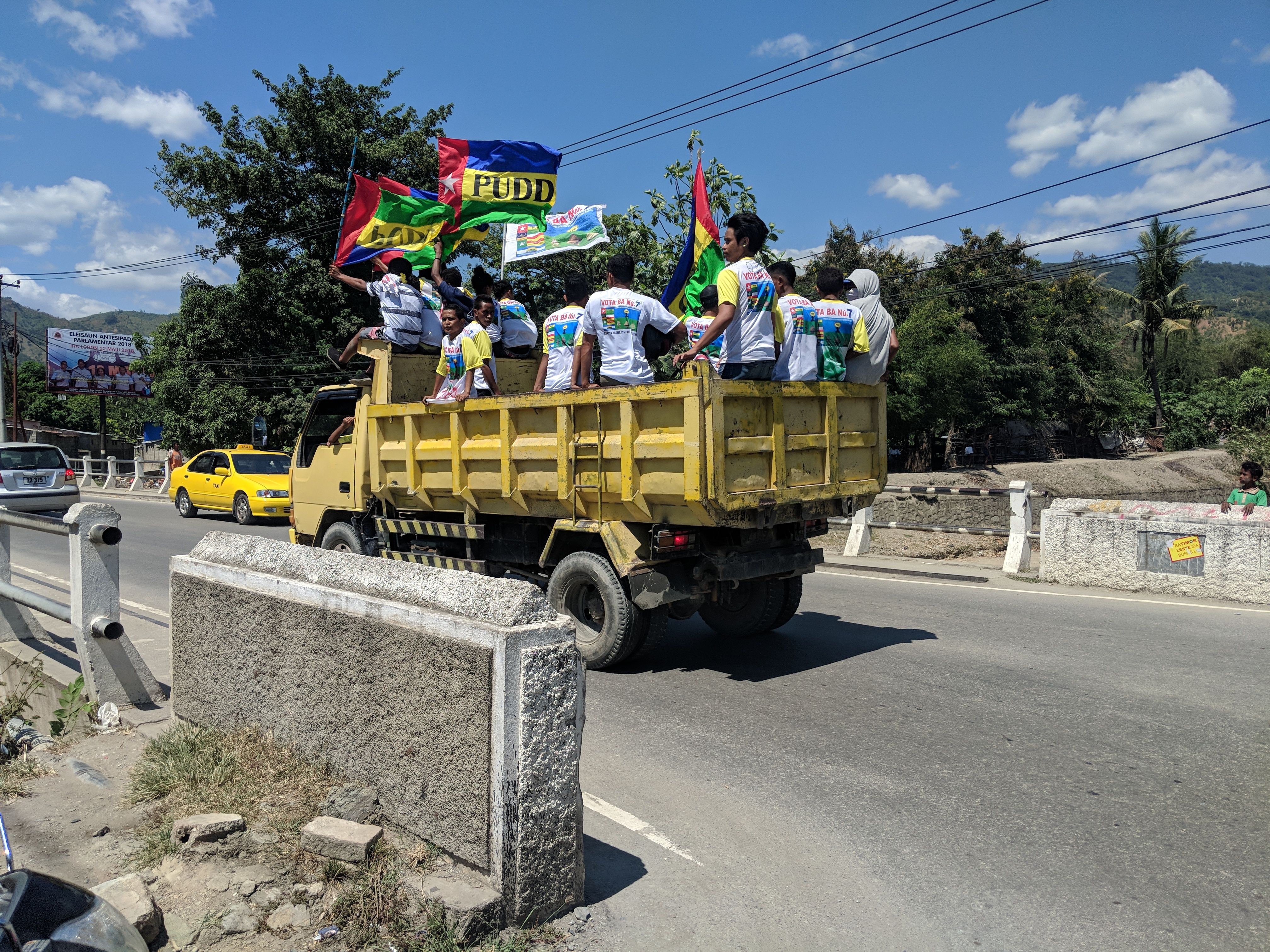Observations from Timor-Leste, one of the world's newest & poorest nations

I’ve been living in Dili, the capital of Timor-Leste since February. It is one of the world’s smallest and newest nations. Just over one million people live on half an island shared with Indonesia, independent since 2002. For a more complete background of this fascinating place see my previous post: Timor-Leste: a teenage nation.
Politics
After independence two powerful political forces emerged that have dominated ever since.
Former guerilla fighters came down from the mountains and created a new political party named Fretelin. Their symbol and flag uses the same colors as the official Timorese flag—red, black and yellow—and they claim to be a sort of continuation of the revolution. In the last elections, they received the most votes and they appear to have the loudest supporters. Even though their stronghold is in the east, which was where the resistance was strongest, their propaganda dominates the Dili streets. When party supporters drive through the capital waving flags and beeping their horn they are most likely to be a Fretelin supporter.
The other major political force here is Xanana Gusmão. He was a guerilla commander during the resistance but was captured and imprisoned in Indonesia. While imprisoned and later under house arrest he directed the resistance from captivity but transformed from a military leader into a diplomat. He has consistently championed the ideas of forgiveness and compromise and was the nation’s first president. He is a living hero and was the symbol of the fight for independence, though he has become more controversial post-independence. He currently leads the CNRT which is part of a broader coalition that opposes Fretelin.
Both factions have roots in the resistance and each has their own view for how the nation should develop. This has led to some issues, including a violent political crisis in 2006 & 2007 as well as the collapse of a Fretelin led minority government in 2017. Though generally, the nation’s politics have become more peaceful with time. Both parties are dominated by greying men who fought in the mountains decades ago, but there is also a new generation of politicians now running for office and a range of new parties being formed.

Economy
The economy is dominated by oil which is where most its export income comes from. However, it is estimated that current oil reserves will run out within a decade. After oil, agriculture is most important. The second major export is coffee and much of the countryside is sustenance farming. Dili, the nation’s capital and only major city, is a port. However, it is not a very large one and can only handle a small number of either imports or exports.
Timor-Leste is simultaneously one of the regions poorest nations and one of the most expensive. It’s a strange paradox which I’ll explore more in the next section.
International Development
Timor-Leste is a unique example in nation building. It’s the only nation in history to ever be completely administered by the international community. Between the independence referendum in 1999 and independence in 2002 a UN administration ran the country. It’s championed as a success story of the UN and International Development (ID) by some and seen as a disaster by others. Both claims are true in their own way.
In 1999 Timor was in ruins. Decades of a repressive occupation ended in a violent fury as retreating Indonesian militias destroyed as much of the nation’s infrastructure as they could on their way out. The international community filled a security and administrative void to transition the nation to independence and the ID community has remained a significant presence ever since. By almost any metric Timor-Leste, one of the world’s youngest democracies, is vastly better off now than in 1999 and that is an impressive feat for which the international community deserves a lot of credit.
As much as the situation has improved though, there are still significant problems and slow progress, some of which can be attributed to ID. As mentioned above, Timor-Leste is simultaneously one of the poorest nations of the region while also one of the most expensive. There are no definitive answers as to why that everyone agrees on but some blame poor foresight by ID.
Upon independence, the nation adopted the US Dollar as its currency. The Indonesian Rupiah, what it had been using and what was used on the other half of the island as well as surrounding islands, would have made the most sense, but for obvious political reasons that wasn’t a possibility. Choosing the dollar seemed easier and safer than creating a new currency. The immediate post-referendum economy was dominated by ID workers and they were already being paid in USD so that also made sense.
A major problem with the influx of international workers was that they were being paid an enormous amount of money by local standards and they also wanted many of the creature comforts they were used too. Most of the nation lived on less than a dollar a day at the time while international staff made hundreds. This huge influx of wealth, and the desire of the international staff to live at standards they were used to, created a parallel economy. Food, accommodation and entertainment industries popped up to serve this new demographic. The nation didn’t have good infrastructure to import everything needed, and the new demographic was happy to pay a premium. This parallel economy persists to this day and has a net effect of driving up prices much higher than one might expect considering the nations GDP.
Next Time
I’ve still got a few more things to share about Timor-Leste; language, present & future and how the current political deadlock is affecting everyday life on the streets of the capital. Stay tuned.